
Weds 22nd / Thurs 23rd October 2013
As a student of architecture I first visited Iwaki city some 19 years ago when working with Yanai San, a Japanese Architect in Iwaki, Fukushima. This month I revisited the city once again to find out about the refugee crisis, radiation, earthquake reconstruction and the tsunami damage along the Fukushima coastline.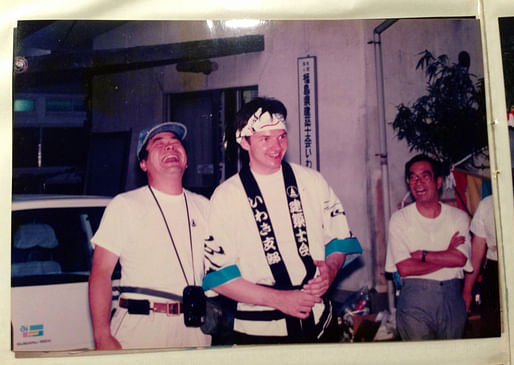
Over my five day visit I stayed at Yanai San’s house for two days and was able to discuss and see first hand the many problems that the earthquake, radiation and tsunami has rained down on this city.
Some businesses are booming in Iwaki city, but others are not, hospitals, community centres, traffic systems are all services under pressure as they try to absorb 25k people displaced by the effects of radiation, the tsunami and earthquake damage.
Iwaki has become a no go area at night, as people believe the Sake bars are populated by refugee people who are too rustic for Iwaki city types. In reality it is the Tepco radiation clean-up gangs spending their very particular earnings, drinking heavily, which Yanai San and Iwaki people fear the most.
During my two days with the Yanai’s I see that there are many posters doted around the city and displayed at public buildings that make statements about not gossiping, tuning into controlled information and to contact the authority if there are any concerns.
During our city walk about I see the new city library has created a whole new section given over to documenting the published information about the tsunami, earthquake and radiation problems. There are from what I can see 10 linear metres of shelves of printed material – all focused on the same subject. The people of Iwaki have information overload - whom do they listen to?
The company is strong in Japan and like any other company the state competes for attention. Information about radiation is gathered from multiple sources, whom do they believe? I ask the Yanai’s this question. In the end it is gossip that caused the Yanai's to flee Iwaki, as I shall discover later.
Daichi radiation gang workers are bussed into Iwaki some 40km from Tomioka town everyday. Tourist hotels are now used as dormitories for these radiation gang workers. Hotel staff left long ago, as after radiation fell on Iwaki, beach resorts, tourist towns and casual tourism were washed away also. It is apparent to me as I arrived by train into Iwaki how few people were on the train.
Normal tourism is difficult to restart here as bed capacity has dropped and radiation gang workers occupy most of the hotels and create a threatening aura given mafia links. Yanai San says people stay at home more now.
During the two days at the Yanai house we visit Iwaki's state of the art PFI arts theatre complex - Alios, which seemed empty. What philharmonic orchestra, or dance troupe, could be persuaded to radiate their talent on one of the four new theatres of this shiny new Alios building? 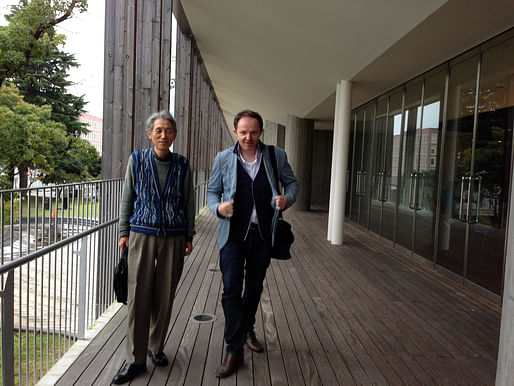
Young people have left, and continue to leave this town, as there are no jobs. The other reality of course is radiation affects the young more than the old, another reason for their quickened exit.
I get a sense that there is fear and anger felt towards refugees. Anger is thought, but not spoken. Yanai San told me that a recent event lead to graffiti being scrawled over the city council building saying…'Go home refugees'.
‘People think the same’…said Yanai San…‘but expressed their anger after this event at the people who wrote the graffiti not the refugees’. This is the Japanese way.
We enter the city council building and Yanai San points out a ‘new department’ located on the ground floor, just thorough the main door… 'New life advice centre'…the sign reads above the desks, where many people of all ages are sat consulting with officials on how to get a refugee house, how to claim for assistance or repairs, and how to cope with the stress at the loss this displaced community feels.
Many public buildings such as the four-year-old Alios concert hall were used as refugee centres for about 1 month after the earthquake. As the city had no power, water, or food, these public buildings became central points for the distribution of food, water, community advice – becoming a place for warmth, light and a place to use the toilet and wash.
Information and advice is prevalent now, but initially after the earthquake hit the Yanai's could rely only upon patchy gossip from trusted sources. They evacuated after hearing news through the grapevine that the Tepco workers had abandoned the Daichi site just 5 days after the tsunami first hit. Up until this point advice had been limited to statements issued by the government saying… 'To stay indoors'.
The Yanai’s daughter, Asako, heard through a co-city-council-worker that the Daichi plant had been abandoned and it had been left in a critical state. So at midnight that same day the Yanai's evacuated, first to Mito as this was as far as the fuel in their car would get them.
Asako's parents tell me they had been happy to stay at home…in their old age radiation was not a threat they took too seriously, but it was Asako that encouraged them to leave, persuading her parents by offering to do the midnight driving. Road diversions following earthquake disruption meant the journey to Mito was very slow and trains were not running due to continuing after shocks and power outage.
At Mito the Yanai’s met their sister to swap over cars to make the rest of the journey to Tokyo, and from there by train to Yokohama to stay at the home of the Yanai's other daughter Michiko. They spent a week in Yokohamma and eventually fled to Townsville Australia and stopped there for four weeks.
Yanai San has friends and work colleagues in Australia having worked in Iwaki's sister city Townsville for many years. The Yanai's had heard from these trusted Oz connections of the dire news on radiation, which it became clear to the Yanai's was not being issued out by the Japanese Government. This fuelled their fear.
Yanai San, up to the point of evacuating, had already taped up windows in their Iwaki home to reduce air leakage and radioactive dust entering the house, but this was the action of an architect and not the action advised by Government.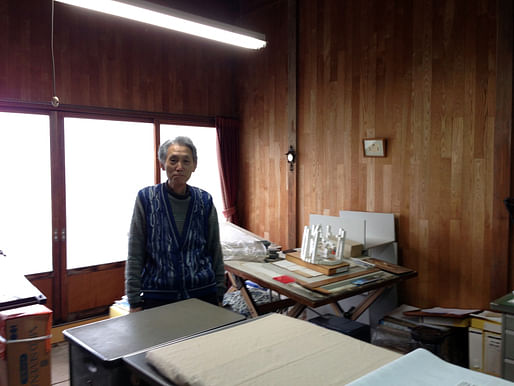
Whilst government advice was to stay indoors, staying in doors was almost impossible. There was no power, no water, no food, or detailed advice about radiation. Toilet flushing was impossible, fuel and batteries had emptied off the supermarket shelves. The garden soon became used as an ad-hoc toilet.
Whilst we discuss the details of the five days after the earthquake I imagine the obedience of the Japanese people and the consideration they have for each other, which spans all generations in this society – I think what if in the UK?
Yanai San confirms her fear at the time was radiation was contaminating Iwaki city. She, and her daughter Asako, tell me that public buildings, parks, playgrounds have since had soil removed, but it is often put in a pile and just covered over with a blue sheet and left at the corner of the site; or it is put in a pit and covered over. The fear is radiation remains at those sites and that it can easily be disturbed in the future or by weather.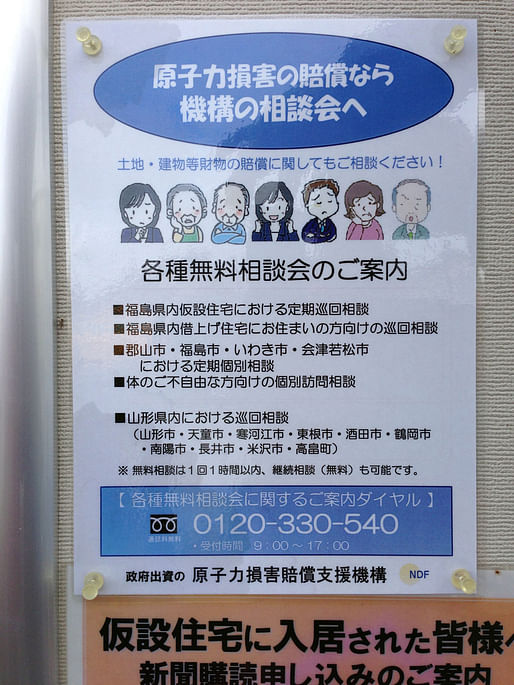
Yanai San confirms the views of local people are… ‘Tepco should be wound up and the Government take over, but instead they fear government has resourced the Yakuza [Japanese Mafia] via the many companies the Government is paying to control gangs of workers to carry out the decontamination process at Daichi.’
These workers are doing dirty dangerous work and they have little if any work rights as they are in the control of the Yakuza who skim-salaries and issue threats to those that are not obedient. Government has no effective control, and the Yanai's say… ‘This is why there continues to be many many problems of leaks and contamination.’
Tepco workers abandoned the site at the time of the melt down and it is a convenient truth that the Government can hide behind the Yakuza to get this dirty work done - but at what cost to humanity and the environment.
After the catastrophic shock, and the sequence of events leading up to it, Yanai San believes people are more liberal now and more self-expressive - living for the moment and not the salary man existence as before.
Yanai San describes a fellow city council employee who has personalised his name badge, much to the shock of fellow Japanese workers and his boss. This is unheard of in Japan. I am shown his business card, which has a fan of the four aces and the city council logo. It states on the card… ‘Magician, likes juggling and playing the piano’… in addition to his role as cultural representative for Iwaki city.
It becomes apparent that the dynamic of the local economy is exacerbated further by the way Government distributes compensation and administers city-planning policy. Those displaced by radiation are given a per person monthly payment of £600. So a family of four can receive up to £2400 per month. This means that those that are the radiation-displaced are with money and can resource a leisured lifestyle - albeit one dependent on rental and refugee accommodation. This radiation lifestyle will last three years.
It is of course apparent to me that the radiation line is drawn tightly around the Daichi plant to limit the amount of government radiation payout. The community beyond the line feel they too are being irradiated and they are displacing themselves also, becoming voluntary refugees from within the more marginal radiation areas.
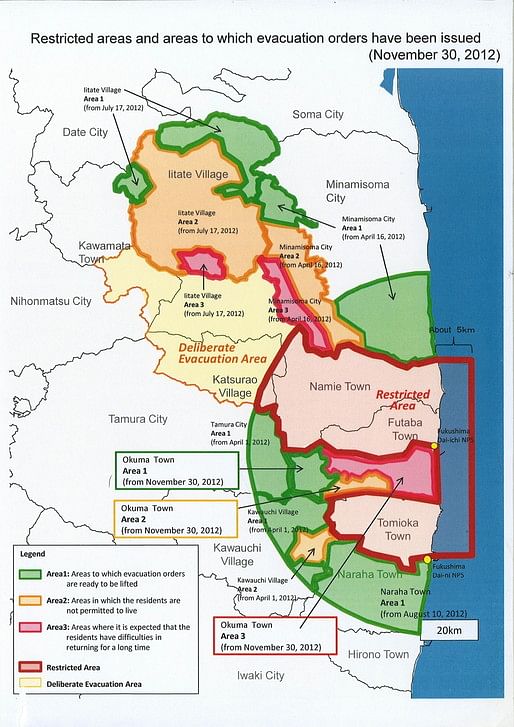
They are resentful of this compensation imbalance - whilst they do not qualify for it. Not to mention the reality of radiation safety and the lack of information stating where and when the radiation level will become safe. Like all government hard lines - they are paper thin, but the effects on both sides are very different.
Those that suffered earth quake damage, or tsunami displacement and who have not been insured for 'acts of god' do not receive financial support - this is adding to Iwaki's growing resentfulness towards radiation refugees, who seemingly are creating pressure on Iwaki's resources whilst they are too leisured by this government money.
The Yanai's did receive a one off payment for earthquake damage. Such payments were assessed on a damage category system of high, medium and low. As an Architect in his mid 70's Yanai San tells me he was very busy after the earthquake going around helping Iwaki city to survey many buildings to grade them for severity of damage, so that compensation payments could be assessed and issued quickly.
Asako tells me there are many anomalies amongst city jurisdictions such that some areas closest to the Daichi plant have declared their beaches safe and open for tourism, whilst those some distance away are declared unsafe. It is clear to me that the people are miss trusting of this illogical sort of misinformation and political duplicity.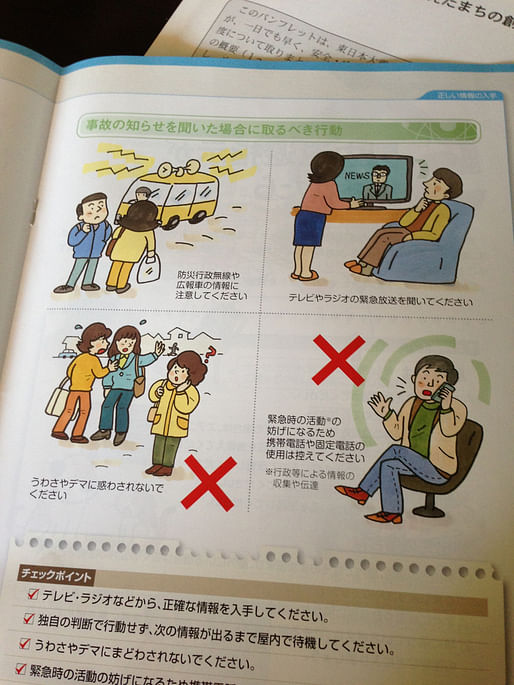
Every public building has a micro sievert monitor stationed outside, usually adjacent to the public arrival space. This serves to calm the public fear. But as Asako said… 'They just cleaned up those areas before they put the station there'. From what I can tell the levels stated on the machines were relatively safe at 0.145 to 0.137.
The fruit Persimmon is in season right now and the Yanai's have a fully laden Persimmon tree in their back garden. Yanai San asks… ‘Do I like Persimmon?’… ‘I don't think I have tried it’… I replied. She holds up a fruit and says... 'It’s radiation free - from local supermarket.’
The reality for the Yanai's is they dare not eat the Persimmon fruit from their own back garden - the birds seemed to continue to enjoy them, however.
Over dinner I ask the Yanai's... 'Have they had their garden checked for radiation?'... They haven't’...and go on to say... 'They do not worry about it at their age'…which is a sprightly mid 70's. They worry that they will have perhaps 10 or 15 years of good health left before a disease or care home sets in.
The complexity of the problem that Fukushima and Iwaki faces is very apparent to me. As a tourist I ask questions - but as a visitor I am told stories. The Yanai's can't escape the reality of living this radiation nightmare. They say they try to carry on as normal, but nothing about their town is normal anymore. Living in Iwaki is like BC-AD, pre war-post war, before Daichi after Daichi.
Before Daichi as a student of architecture working in Iwaki I knew this town well, but after Daichi not anymore. Now it feels like a different place, less youthful, needs more paint, the flags have gone; there are weeds in the kerbs, less outward looking and less progressive. It feels like it needs to be cared for, put into special measures.
As the outsider looking in, over dinner, I try to find a positive way forward my architectural mind was searching, I offered… ‘The city needs to embrace the international community for help. I suggest it holds within it’s new Alios building a symposium on post tsunami-earthquake-radiation rebuilding, inviting the worlds experts to come and offer solutions for city re-planning and community cohesion.’
Yanai San's eyes lit up, she spots an opportunity to make new international connections, which is indeed how we first met all those years ago, but suggests that… ‘Japan wouldn't want to admit failure losing face.’ I suggested… ‘It should promote the event as Iwaki promoting and inviting the world to witness how it is rebuilding community after the tsunami - Japan remaining always on top.’ Again her eyes light up.
The next day in the street near the four year old new city library building purely by chance, Yanai San spots the city's head of trade and industry and quickens her step to catch him up to tell him about my international symposium idea. Afterward much discussion Yanai San reports back to me that he has had a similar idea but the Iwaki City Council doesn't have a budget for this. So the idea stops there for a while, like all governments and city planning everywhere it is slow to react and quick to say no – but at least the seed is sown.
Facts:
As a result of the tsunami there are still 300 missing bodies from Iwaki area.
Refugees have nowhere to go during the day other than to the library and public places, as the refugee pre-fab housing has limited community structure and the pre-fab homes themselves are spartan.
The earthquake lasted for 3 minutes, with many after shocks continuing for days afterwards, the tsunami followed some two hours later, and the radiation leakage 5 days after that.
Architect, traveler and top 25 all time star architect of Grand Designs... follow me for architecture, design and globalism. Based London • Hereford
1 Comment
I love how you have written it. I can't begin to think how people there survive and more importantly, how you might have felt going back there after almost two decades.
Looking at the larger picture, its disappointing knowing that such disasters continue to occur mainly due to human error and also how, governing authorities don't take the required initiative to clean up .
Block this user
Are you sure you want to block this user and hide all related comments throughout the site?
Archinect
This is your first comment on Archinect. Your comment will be visible once approved.